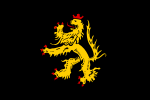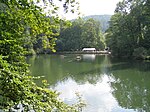Palatinate campaign
1620s conflicts1620s in the Holy Roman EmpireElectoral PalatinateInterlanguage link template existing linkInvasions by Spain ... and 5 more
Military campaigns involving EnglandMilitary campaigns involving SpainPortal templates with redlinked portalsThirty Years' WarUse British English from July 2021

The Palatinate campaign (30 August 1620 – 27 August 1623), also known as the Spanish conquest of the Palatinate or the Palatinate phase of the Thirty Years' War was a campaign conducted by the Imperial army of the Holy Roman Empire against the Protestant Union in the Lower Palatinate, during the Thirty Years' War.
Excerpt from the Wikipedia article Palatinate campaign (License: CC BY-SA 3.0, Authors, Images).Palatinate campaign
Wolfshohl, Leiningerland
Geographical coordinates (GPS) Address Nearby Places Show on map
Geographical coordinates (GPS)
| Latitude | Longitude |
|---|---|
| N 49.5 ° | E 8.0166666666667 ° |
Address
Wolfshohl
Wolfshohl
67316 Leiningerland
Rhineland-Palatinate, Germany
Open on Google Maps








